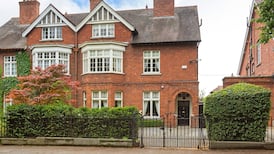History lies at the thick walls of Mount Hanover House and over the centuries it has overlooked the lush Co Meath countryside and touched the lives of the families who have owned it in various ways. Building began in 1690, the year of the Battle of the Boyne. The stables were first to be completed, just in time to shelter the horses of King James. He lost, of course, and it is said that the Bellew family, who first owned Mount Hanover, forfeited the property as a punishment for their support of the Catholic king.
The house was sold, in 1703, to a Mr Curtis, and then in 1805 to local Drogheda merchant, Michael Duff. He had no children, so Mount Hanover passed to his nephew, and so to the Mathews family who owned it until 1985 when the current owners bought it. Built over four storeys, it is an imposing place, surrounded by formal gardens, which cross over into rich, well-drained farmland – 44 hectares (109 acres) Walled gardens There is a large farmyard with cattle sheds, dog sheds and a cattle crush; plus a separate atmospheric stable yard with a two- bedroom cottage on site (in need of restoration). Romantic local legend has it that these stables still sport the pockmarks from musket fire, as James's forces held out against those of William of Orange.
There is a walled garden with fruit trees, and a lovely avenue of oak trees that once must have connected Mount Hanover with another of the local big houses.
0 of 9
Inside are other snippets of history. Daniel O’Connell spent the night here in 1842, en route to a public rally. Maybe he took Mass here – it’s possible, the first-floor landing is consecrated, with a stained glass window, altar and missal.
The current owners completely restored it when they bought it, reducing the number of bedrooms to six by creating very generous en suites and dressingrooms.
Bright, extended kitchen They extended the kitchen, which is a welcoming, bright space, warmed by an Aga. The bespoke units include a large kitchen island, and to the right, a sunny breakfast area opening on to a long glassed-in sunroom, which looks over the gardens.
Another addition was an indoor swimming pool in an airy double-height space. This complex also includes changing rooms, a sauna and steam room. John O’Connell, who worked on the restoration of Fota House, was called in to help with the project, and advised on the design and style. The results are to be seen in the taste and restraint that has the right balance of grand and cosy warmth.
On the grand side are the large formal drawing and diningrooms, which the current owner admits have seen “a great deal of wine drunk over the years”. Some of this is stored in the old arched cellar at basement level, at just the right temperature.
This lower floor has full-sized windows, so it is bright and airy, and with its own entrance it could be separated, if desired, as a self-contained apartment or office complex. Though the restorations were thorough in the 1980s, there's still a great deal that could be done. Rolling views On each of the top two floors, external doors lead to spaces that were once envisaged as roof gardens, so that's a gorgeous possibility – especially considering the views from all aspects, across mature trees to the rolling fields, and Bellewstown Hill in the distance.
Just 7km from the M1, Mount Hanover is under half an hour from Dublin airport, and 45 minutes from the city centre. Drogheda is closer still, and you're also in the vicinity of the Boyne Valley, plus beaches, golf courses, and horse racing. The Laytown Races are unique, as the only race event in Europe to be run on a beach under Turf Club rules. Mount Hanover as a stud farm? A racing stables? It's worth a thought. There are many possibilities.
Mount Hanover is for sale by private treaty through Savills asking €2.85 million.






















